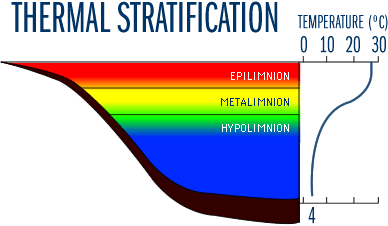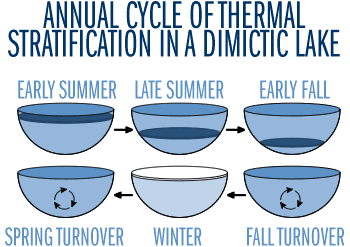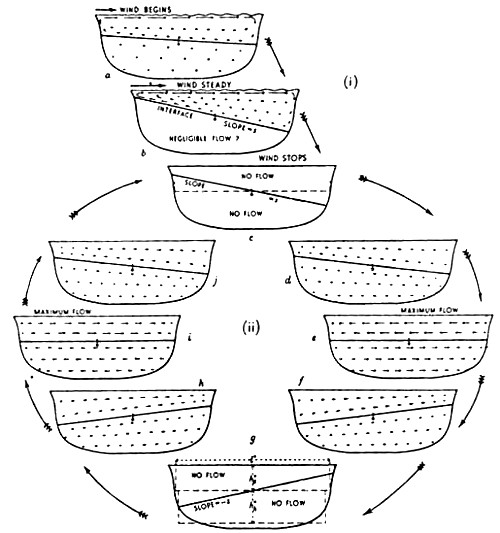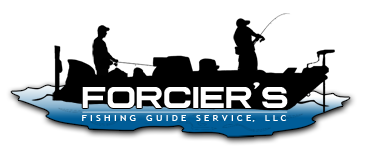Fetch Yourself A Musky
By Jason Long (January, 2003)
Ultra clear water. It’s what most people think of when they envision the pristine Northwoods. However, these same lakes are often referred to as tough or difficult lakes to fish. Typically this means they actually receive less fishing pressure. Traditionally these lakes have been referred to as Trophy Water, yet the experts suggest only fishing them with a guide or in low light conditions (night or rain). Many of these lakes that are filled with water that resembles the clarity of a good gin martini are also very small in size, which may explain why they are often referred to as gin bottles. However, larger situations also exist especially in Canada. These larger lakes are often referred to as Trout Water.
Trout Water and Gin Bottles may not be so mysterious if you apply some common knowledge and approach them with a little intelligence. Dick Pearson has an entire chapter devoted to Trout Waters in his book Muskies in the Shield. Dick’s book provides 99% of what you need to know to fish these challenging waters successfully. With the knowledge from Dick’s book there is no need to rely on a guide, wait for a rainy day, or become a nocturnal fisherman to be successful on these types of waters. Certainly hiring a guide is always a good investment and fishing at night can be outstanding, but you get the point.
Many outstanding musky men, too many to list, have already put most of the musky puzzle together and kindly documented it in magazine articles and books to help educate future anglers. Some will be content with most of the puzzle, yet a few ambitious anglers will continue the quest for the few final pieces. I believe this is true because when it comes to muskies all too often it seems as though the 1% remaining to be discovered occurs 99% of the time! Let’s face it, muskie fishing isn’t easy and when times are tough it has been preached by many to be versatile. Well, just what does this mean. In my opinion, versatility means to combine conjecture and speculation with known facts to find something that puts fish in the boat. So let’s start with the facts. Understanding Lake Ecology can introduce several facts for conjecture.
Gin Bottles and Trout Water are not only very clear, they are often very deep as well. Deep lakes typically stratify during warm water periods and this naturally occurring phenomenon offers plenty of opportunity for conjecture as to how it may be linked to successful esox angling. Furthermore, understanding wind fetch, wind set-up, and the seiche (pronounced say-she) effect may also help you identify potential windows of opportunity that could help crack the gin bottle. Although these phenomena’s are real and explained by science, we can only speculate how they may influence the location and behavior of ol esox. Many of my personal experiences appear to correlate to these events, suggesting that they may be yet one more piece of the puzzle to consider. However, it is unknown whether I was just lucky, false confidence led to a self-fulfilling prophecy, or perhaps there is some validity to the conjecture. I suppose time will tell, but who has time to wait.
Wind fetch is the effective distance over the surface of the lake that wind can blow unimpeded. This is mostly a function of lake size, but also relates to shape and orientation of the long axis relative to prevailing storm winds. Thus, one might speculate that Lake Morphology could be a critical element to consider for your lake selection.
A lake with more fetch receives more mixing from the wind. This often increases the depth of the thermocline and offers the musky a larger comfort zone in which to find sanctuary or feed. I feel that the deeper a musky lives, the more difficult it is to catch because of the distance between you and your quarry. Thus, I feel the single most important aspect for contacting muskies is identifying opportunities to locate them at shallower depths. This is especially true if attempting to target suspended fish out over the seemingly random open-water basin areas. For example, if a lake has depths of 80 feet and the thermocline establishes itself at 20 feet, consider the thermocline as a boundary similar to the lake bottom. You now have essentially reduced about 75% of the water in which you may find a musky. That just increased your odds of contacting fish tremendously. The thermocline is also known as the Metalimnion (as shown in figure 1) and offers a cool water sanctuary for both muskies and forage alike. Oxygen permitting, muskies can survive below the thermocline, however they are a warm water species and I feel they will spend the majority of their time in the epilimnion. Thus, the skinnier? the epilimnion the shallower muskies may be found and more accessible they may be.

Figure 1
Even in clear water a 20-foot barrier between you and your target can present a challenge. Thus, it might pay to take wind fetch into consideration to narrow that gap even further. First, you could identify lakes in your area that have less fetch and, therefore, the thermocline remains much shallower all season long. The shallower the thermocline, the closer the fish remain to the surface and the easier it should be to get your lure in the strike zone. Obviously smaller lakes have less fetch than larger lakes, however there may be opportunities on those larger lakes as well. For example, lakes that are very irregular in shape with lots of points and islands often are more sheltered from the wind and may actually have kind of a lake within the lake effect. Long, narrow lakes that have their longest axis aligned in a NW to SE direction could be dynamite in June, July, and August when the prevailing winds are often of a more SW or Westerly direction. These lakes may not experience as much wave activity to mix the water since the predominant winds will usually blow across the narrow stretch of the lake rather than along the longest stretch. To the contrary, when the cool NW winds of fall predominate these same lakes may turnover earlier than other lakes of similar size and depth due to the increased mixing. Likewise, a lake or section of a larger lake that has little wind fetch from all directions may actually stratify longer as well. A small detail that might lead to some big results.

Figure 2
Although it would seem that your best choice for a gin bottle selection would be a small lake with less wind fetch, this may not always be the case. If you believe bigger lakes produce bigger fish, than that should be incentive enough to fish them. Figure 2 (obtained from the Water on the Web website http://wow.nrri.umn.edu/wow/) shows that as the seasons progress the thermocline gets deeper and deeper. If the thermocline won?t help keep fish shallow later in the season, what else will. Perhaps wind can become your ally to overcome the larger playing field that accompanies a deeper thermocline.
Wind generates more wave action on larger lakes. Wave action reduces light penetration. This may provide a situation where even on a sunny day you have low light conditions underwater. If you are a firm believer in only fishing clear water during low light conditions, here may be your chance to fish those big, clear lakes while the sun is shining. The mixing action of the wind and waves may also stimulate the entire food chain and not only move fish up onto classic shallow structures, it may also increase their aggressiveness. A perfect combination for some fast and furious action.
Although a stiff wind may offer a good structure pattern on these lakes, there may also be an overlooked open-water opportunity for suspended fish. As the distance the wind can blow unimpeded (fetch) increases, the more wind set-up the lake encounters. The wind stacks up water on the windblown side of the lake, which pushes the thermocline deeper. As a result, the entire thermocline tilts or shifts as shown in part I of Figure 3. Conjecture and speculation might suggest that the leeward side of the lake now may have an open water pattern similar to early summer, despite being early fall. Fish suspended in the basin may become pinned in a much shallower epilimnion layer on the lee side of the lake. So if the wind-blown structure and wind-induced current areas are not producing or you simply need a break from the wind and waves, head to the calm side of the lake and float a basin in peace and quiet. You may be pleasantly surprised.
Another fact to consider is what will happen when the wind stops blowing. The wind set-up that tilted the thermocline deeper on the windward side and shallower on the calm side, will now relax and the lake will experience a Seiche Effect as it attempts to reach equilibrium. As shown in part II of Figure 3, the water that piled up on the windy side of the lake will now rush back towards the calm side of the lake. The current most people attempt to take advantage of is the wind-induced current that they can actually see while the wind is blowing. However, after the wind stops blowing there may actually be a subtle reverse current that quite possibly could provide some unique opportunities. So remember, when the wind stops blowing the wind-induced current you may have been taking advantage of doesn’t stop flowing, it simply changes direction. Also keep in mind that larger lakes experience more significant wind set-up, which creates a more dramatic seiche effect that perhaps is more useful.
Thanks to the seiche effect and some creative speculation, you may no longer need to leave the lake once the wind stops blowing. The reverse current generated when the water rolls back towards the calm side of the lake might actually push fish up onto classic mid lake structures or pull them into neck-down areas. This might be a time for those chasing suspended fish to abandon the basin for a moment and quickly spot check some classic structure. Keep in mind that larger lakes most likely offer a longer window of opportunity too. Also keep in mind that the seiche effect occurs on lakes that do not stratify as well, so this reversed current effect may be applicable just about anywhere there is wind and water.

Figure 3
I think everyone will agree that catching big muskies is never easy. Even the best of the best have a difficult time consistently putting big fish in the boat. Thus, to definitively prove whether thermal stratification, wind set-up, and seiche effects can influence musky location and your ability to catch them is near impossible. However, ignoring these naturally occurring events won’t increase your esox angling success any more than approaching them with an open mind and considering how just they might provide opportunity. Time will tell whether the conjecture and speculation of Fetching a Musky is fact or fiction. Why not find out for yourself
